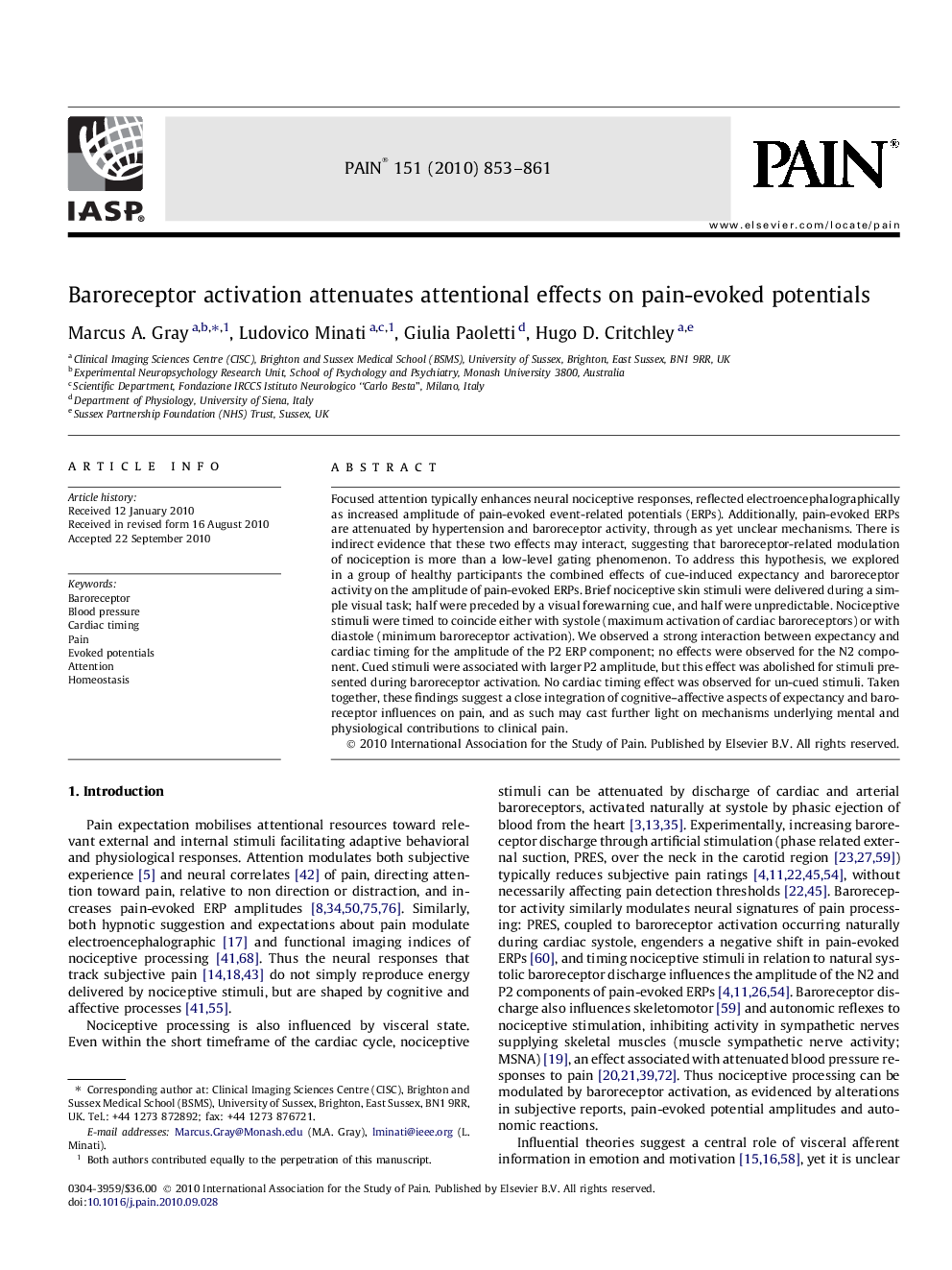| کد مقاله | کد نشریه | سال انتشار | مقاله انگلیسی | نسخه تمام متن |
|---|---|---|---|---|
| 10451083 | 918386 | 2010 | 9 صفحه PDF | دانلود رایگان |
عنوان انگلیسی مقاله ISI
Baroreceptor activation attenuates attentional effects on pain-evoked potentials
دانلود مقاله + سفارش ترجمه
دانلود مقاله ISI انگلیسی
رایگان برای ایرانیان
کلمات کلیدی
موضوعات مرتبط
علوم زیستی و بیوفناوری
علم عصب شناسی
علوم اعصاب سلولی و مولکولی
پیش نمایش صفحه اول مقاله

چکیده انگلیسی
Focused attention typically enhances neural nociceptive responses, reflected electroencephalographically as increased amplitude of pain-evoked event-related potentials (ERPs). Additionally, pain-evoked ERPs are attenuated by hypertension and baroreceptor activity, through as yet unclear mechanisms. There is indirect evidence that these two effects may interact, suggesting that baroreceptor-related modulation of nociception is more than a low-level gating phenomenon. To address this hypothesis, we explored in a group of healthy participants the combined effects of cue-induced expectancy and baroreceptor activity on the amplitude of pain-evoked ERPs. Brief nociceptive skin stimuli were delivered during a simple visual task; half were preceded by a visual forewarning cue, and half were unpredictable. Nociceptive stimuli were timed to coincide either with systole (maximum activation of cardiac baroreceptors) or with diastole (minimum baroreceptor activation). We observed a strong interaction between expectancy and cardiac timing for the amplitude of the P2 ERP component; no effects were observed for the N2 component. Cued stimuli were associated with larger P2 amplitude, but this effect was abolished for stimuli presented during baroreceptor activation. No cardiac timing effect was observed for un-cued stimuli. Taken together, these findings suggest a close integration of cognitive-affective aspects of expectancy and baroreceptor influences on pain, and as such may cast further light on mechanisms underlying mental and physiological contributions to clinical pain.
ناشر
Database: Elsevier - ScienceDirect (ساینس دایرکت)
Journal: PAIN® - Volume 151, Issue 3, December 2010, Pages 853-861
Journal: PAIN® - Volume 151, Issue 3, December 2010, Pages 853-861
نویسندگان
Marcus A. Gray, Ludovico Minati, Giulia Paoletti, Hugo D. Critchley,